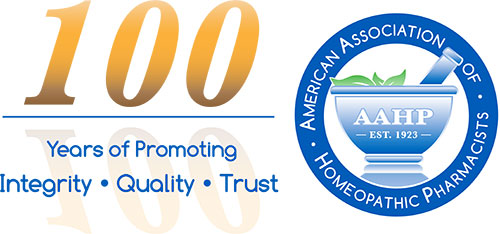Homeopathy’s Path Ahead: 5 Ways We’re Moving the Needle Together
A glance at AAHP and HPCUS’ multi-year, industry-wide initiative to clarify ambiguities in homeopathic manufacturing.
Homeopathy’s path forward is a collective effort between manufacturers, scientists, homeopathic practitioners, and regulators. Stemming from AAHP’s first Summit in 2019 with FDA keynote speaker Francis Godwin, the industry identified five key areas where quality control compliances are murky. Resolving these issues to avoid individual interpretations will reduce the risk of FDA warning letters to manufacturers and subsequent negative images of homeopathy.
Thus, beginning in 2020, AAHP partnered with the Homeopathic Pharmacopeia Convention of the United States (HPCUS) to work on a multi-year, industry-wide initiative to increase harmonization and close those gaps. HPCUS is the technical arm, creating solutions; AAHP is the convener and educator, bringing industry together during annual Summits.
Each year, AAHP plans to hold a Summit, convening industry leaders, experts, and FDA. It’s a progression of presenting initial concept papers for all to weigh-in on the practically for your business. Finalized papers will be presented the following year—which is why it is important that each business keep up with the discussions and decisions affecting your future. We also plan to have a member of FDA present at each meeting to offer feedback on direction. It is this dialog between FDA and industry that will ultimately build a strong working relationship with the agency.
Below are the five gap areas we’re working to close over the coming years:
1. Active Pharmaceutical Ingredients (API)
In the first area, we’re working to create detailed guidelines for APIs such as starting materials, active drug substances, and dilutions in powder or liquid form. These guidelines will ensure that the material received is compliant with the recipient’s expectations and applicable regulatory requirements.
Objective: Develop a white paper/guideline encompassing the topics listed under 21 CFR 211 Subpart E-Control of Components and Drug Product Containers and Closures.
Progress to date: At AAHP’s 2020 Summit, Adam Grobin, PhD, independent consultant, presented and discussed an initial concept paper. He will present the finalized white paper during our 2021 Summit.
2. Product Release
Here we are working on a guideline to help manufacturers appropriately test conformance to final specifications for drug products. We’re placing much consideration on how starting materials diminish during many attenuation steps, resulting in very low concentration of the analyte in homeopathic products.
Objective: Develop a white paper/guideline encompassing the tests to be universally considered (identity, assay, impurities, and microbiological quality) for final products.
Progress to date: Under development.
3. Validation of Dilution Process for Preparation of Hahnemannian Liquids
In the third gap area, we’re developing a guideline to describe the requirements for validation of the dilution process used in manufacturing liquid homeopathic products. Our aim is to establish validation procedures by groups, where the groupings represent similar chemical structures and similar manufacturing conditions.
Objective: Develop a guideline/white paper defining Hahnemannian liquid dilution process procedure steps, variables, and controls necessary to establish the process within a state of control.
Progress to date: Isabelle Chanel, director, Product Development and Regulatory Affairs, Boiron France, will present a concept paper for discussion at AAHP’s 2021 Summit. A finalized white paper is slated for completion in 2022.
4. Validation of Dilution Process for Powders
Like liquids, we also need to create guidelines to describe the requirements for validation of the dilution process used in manufacturing powdered homeopathic products.
Objective: Develop a guideline/white paper defining powder dilution process procedure steps, variables, and controls necessary to establish the process within a state of control.
Work to begin in 2022–23.
5. Dosage Form Manufacture—Discrete Solid Oral Dosage Forms
The final gap area will require us to work on guidelines establishing the blend uniformity (BU) and content uniformity (CU) requirements during the manufacturing of homeopathic drug products, including requirements for bulk hold study and powder segregation.
Objective: Develop a guideline/white paper defining procedures for BU requirements during manufacturing and CU of homeopathic discrete dosage units.
Work to begin in 2022–23.
AAHP’s next Summit will take place on June 15, 2021. We encourage all of those in the homeopathic manufacturing community to join us, engage in our progress, and hear from guest speaker, Richard Lostritto, PhD, of FDA.
